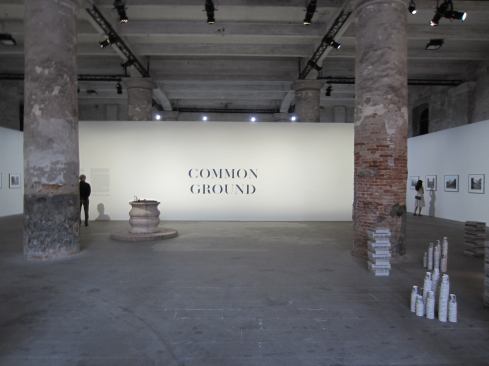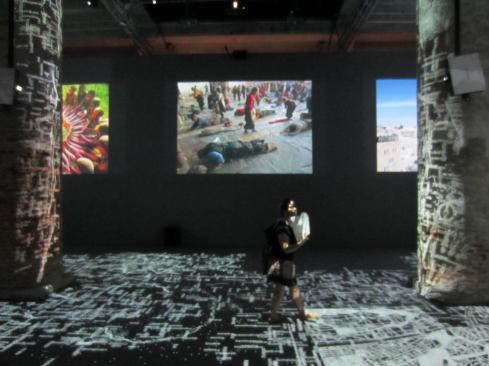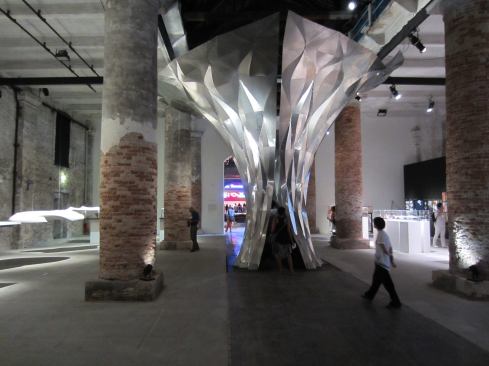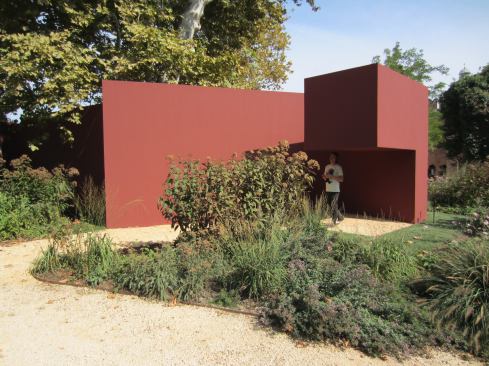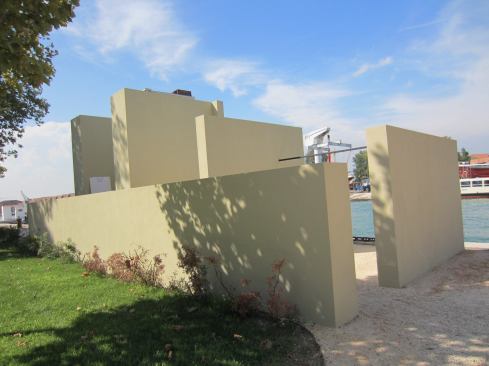Richard Ingersoll
Entry to the Common Ground exhibition in the central pavilion at…
Every other year, the Venice Biennale hosts the world’s grandest celebration of architecture. Hundreds of architects from all over the planet prepare installations that attempt to demonstrate why we need such a profession, or why we don’t. This year’s director, British architect David Chipperfield, Hon. FAIA, borrowed the slogan “Common Ground” from American social philosopher Richard Sennett in the effort to redirect the discourse around architecture toward something more modest that speaks of what remains of collective values. Common suggests many worthy companion terms, such as good, cause, denominator, sense, and knowledge. But it also evokes dull. The German photographer, whose stark photographs are scattered around the exhibition, provides a background of “unconscious places” that illustrate how boring and without character most contemporary urban environments can appear.
The Biennale uses two main locations, the Arsenale, Venice’s medieval shipyards, and the Giardini, public gardens where dozens of pavilions sponsored by different countries put on the national displays. As I wandered through the Arsenale, which is the most personal expression of the director, I found most of the content extremely pedagogical. The exhibition begins with a stone well—a symbol of the Venetian struggle to provide a common water supply for each island neighborhood—and moves through a multi-image booth provided by Sir Norman Foster, Hon. FAIA, a kaleidoscope of well-known images flashing on the walls and a moving mosaic of keywords on the floor, a presentation that kind of brainwashes visitors with a history of architecture.
Many of the successive pieces rely on conventional tools of drawings and models for considering the value of buildings. The most powerful didactic event is the room prepared by Farshid Moussavi, which illustrates qualities of architecture, such as porosity, grids, obliqueness, using full-screen projections to display contemporary exampleson four walls. Excepting a colossal pleated steel flower designed by Zaha Hadid, Hon. FAIA, the show avoids spectacle, as if to say: How can we be brag about the toys of capitalism at a time when the loans to pay for them have all gone wrong, pushing large sectors of the population, including architects, into misery.
There are a surprising number of Swiss firms or projects present (from Luigi Snozzi to the Novartis campus in Basel to a film by Wim Wenders on Peter Zumthor), and I tend to agree that this exceptionally democratic country consistently provides examples of dealing creatively with the common. The Golden Lion career award went to the Portuguese architect Alvaro Siza, an architect of modest projects, who has spent a lifetime searching for what Le Corbusier called the “correct play of forms in the light.” Siza and his colleague, Eduardo Souto de Mura, were commissioned to add some temporary forms to the gardens behind the Arsenale. These provide the most convincing visions of how to achieve something that is exciting and out of the ordinary. Siza designed a set of wine-red walls that mimic the density and labyrinthine patterns of Venetian streets, creating lovely little spaces for people to get away from the crowds and appreciate the power of naked forms in the sunlight. The building has no function except to pull visitors through its spaces, where they can observe the changes in light that come through well-calculated slits. One can start to appreciate the common with this folly and then move to the more complex questions of society found in the other exhibitions.
